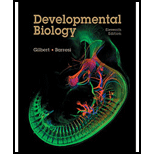
To review:
The molecular and cellular events responsible for the gut looping, as the gut tube rotates in specific directions, locate the stomach near the heart and the appendix on the right hand side.
Introduction:
The mammalian gut development starts at two sites that undergo migration towards each other and ultimately fuse in the center. Initially, the gut cells forms a flat sheet beneath the embryo, followed by the formation of the gut tube. The cells from the lateral parts of anterior endoderm moves ventrally in the forgut, and leads to the formation of tube of anterior intestinal portal (AIP) whereas the caudal intestinal portal (CIP) is derived from the posterior endoderm. The initiation of counterclockwise coiling of the intestine is carried by leftward tilt of the primitive gut tube, which is a result of left-right asymmetries in the architecture of the dorsal mesentery. The gut coiling in specific directions is associated with regulated molecular and cellular events.
Explanation of Solution
In a number of vertebrates, organs adopt asymmetric positions with respect to the midline, not much is known about the movement of the tissue and cellular changes which regulates the gene expression to produce this left-right asymmetry. The evidences based on the looping of the zebrafish gut suggests that this process results from the asymmetric migration of the neighboring lateral plate mesoderm (LPM). LPM autonomously provides a motive force for the gut displacement. The small domain of the gastrulating embryo in mammals appears to mediate the action of cilia present on the cells at the Node. This process triggers a cascade of molecular events which results in unilateral expression of the TGF-β-related ligand Nodal. In silico analysis suggests that left-right asymmetries is derived by synergistic changes in its epithelium and mesenchyme. Cells are more densely packed on the left side compare to right, in the mesenchymal compartment. Extracellular matrix (ECM) and cell: cell adhesion properties also vary, dorsal mesentery ECM follows left-right asymmetric condition when adhesion molecule N-cadherin is expressed exclusively on the left side. The asymmetric expression of two transcription factors Pitx2 and Isl1 is also crucial for these asymmetries.
Thus it is concluded that a number of molecular and cellular events are responsible for the gut looping, like lateral plate mesoderm (LPM), Extracellular matrix (ECM) and cell: cell adhesion properties and gene expression of transcription factors Pitx2 and Isl1, along with many other factors.
Want to see more full solutions like this?
Chapter 20 Solutions
Developmental Biology
- Need help with 5-7 please Pre-laboratory questionsarrow_forwardREVIEW QUESTIONS: What are the basic concepts and precautions to be observed in specimen collection forMicrobiological examination? Enumerate specific examples of clinical specimens collected for microbiological examination.Give 2 specific examples of bacteria isolated from clinical samples. What is a transport medium; give specific examples and state their purposearrow_forwardQ1. Assessment . Most normal tissues contain resident macrophages, and connective tissue sites in the gastrointestinal tract and the lung contain large numbers of these cells. Yet the blood also contains a high number of circulating ‘classical’ monocytes that can differentiate into macrophages after entering tissues. These circulating monocytes function to: Phagocytose and kill pathogens in the blood Line the endothelial surfaces of the blood vessels with phagocytic cells Enter lymph nodes and patrol for infecting microbes in these organs Amplify the local innate immune response by entering tissues that are infected Differentiate into dendritic cells during an inflammatory response. Chose.arrow_forward
- Nursing questions 7. The ___________ color test reagent turns orange-brownin the presence of amphetamines.?arrow_forwardQUESTIONS: 1. Mesodermal Derivatives of the 10 mm Pig Embryo, what happens to the ductus venosus and ductus arteriosus at the time of birth? 2. Mesodermal Derivatives of the 10 mm Pig Embryo, how does the use of the term ductus venosus for this hepatic channel differ from the usage of the term in the chick?arrow_forwardNeed help with questions 6-10arrow_forward
- prompt: 10-1: Case Study—Pregnancy Renee is a 21-year-old African American woman in her 35th week of pregnancy. She is married and the mother of two young children. Her pre-pregnancy BMI was 18.1. She has gained 24 pounds since becoming pregnant, but at her most recent prenatal visit, she was found to have lost a pound over the past week. She says that her weight loss is due to “stress.” Renee says she enjoys eating canned spinach cooked in tomato sauce with chopped onions and craves “Napoleon” flavored ice cream. Her 24-hour recall is as follows: Breakfast: 16 oz kiwi strawberry drink Lunch: 16 oz lemonade; 1½ baked chicken breast; 3 cups canned spinach cooked in canned tomato sauce and onion; 2 slices of carrot cake with cream cheese frosting Snack: 8 oz whole milk; 1 peanut butter and jelly sandwich Dinner: 16 oz decaffeinated tea; 5 oz beef and rice dinner; 4 scoops Neapolitan-style ice cream Snack: 24 oz water; 1 buttermilk biscuit question: Plot Renee’s weight gain on the…arrow_forwardcan you help with q2 plzarrow_forwardNeed help with bio questions... 1. Explain two ways the small intestines increases its surface area? Why is this important? 2. Why are microvilli only present on the apical surface of the cell? 3. What is the main function of goblet cells?arrow_forward
- ANTI-HBS QUESTIONS1. Why does the body need anti-HBs?2. Why does presence of anti-HBs exhibit protection against the HB virus?3. What are other antibodies to hepatitis B virus?4. What is the diagnostic significance of each of these hepatitis B antibodies?5. Why is it important that healthcare professionals should have Anti-HBs?arrow_forwardQ23: what is the correct answerarrow_forwardCase Study Link: https://telegra.ph/Case-study-10-09 (Please read it before answering)1. QUESTION:What information systems are implemented by JurongHealth? Describe the input, processing, and output of any one such system.arrow_forward
- Essentials of Pharmacology for Health ProfessionsNursingISBN:9781305441620Author:WOODROWPublisher:Cengage
